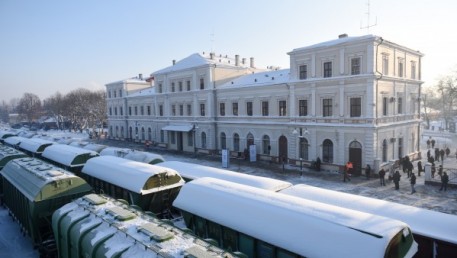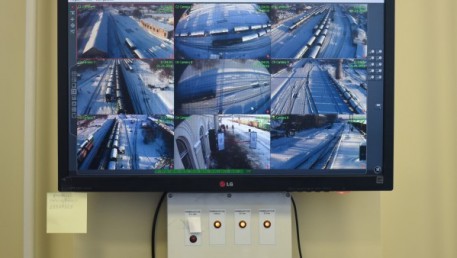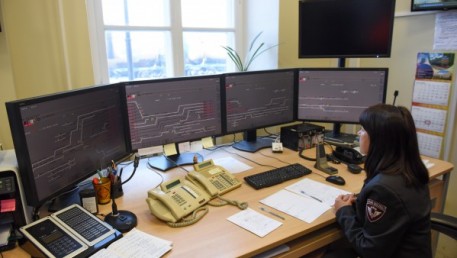
Modernisation of signalling system on Liepaja Railway Station with reconstruction of Railway tracks
- Client VAS Latvijas Dzelzceļš
- Implementation period 2014-2015
- Project location Latvia, Liepāja
- Project partners Thales – FIMA – Transceltnieks
- Project task The aim of the project is to undertake a fundamental reconstruction of the Liepāja Station which mainly includes modernisation of the signalling system and reconstruction of tracks in order to improve safety and increase freight capacity of this logistics hub.
Solutions in this project
- Train Control Systems
- Level crossing signalling systems
- Point and signal automation systems
- Axle counters
- Electricity and lighting systems
The project involved replacement of manually operable switches and replacement of the old signalling system with a microprocessor control system. A remote monitoring system for the Liepāja Station which is connected to the Riga Dispatch Centre was created, enabling to prepare and coordinate the planned train schedule more efficiently and accurately. The main tracks of the Station were reconstructed and extended by 2,700 metres in order to accept train composition of 57 respective wagons.
It was a responsibility of FIMA to construct the railway signalling and electricity systems within the framework of modernisation of the Liepāja Station. This meant installing new transformer substations, construction of point and level crossing lighting system, as well as installation of new traffic lights in the entire area of the Liepāja Station. FIMA specialists were also in charge of installation of point heating and automation systems. In order to ensure operation of the new equipment and systems, reconstruction works were carried out on the technical premises which will improve the working environment for station managers and technical staff.
The total cost of the project is EUR 24.4 million, out of which EUR 18.76 million is co-financing from the EU Cohesion Fund and EUR 5.6 million is co-financing from Latvijas Dzelzceļš VAS.
The project deadline posed the greatest challenge. The project was carried out within 526 days, from execution of the agreement to commissioning of the site. Research, design and coordination took approximately 11 months, while construction works were carried out within 7 months. Previously, a similar construction project was realised within a year.
Related projects
-
 Installation of intelligent transportation systems on road E67
Installation of intelligent transportation systems on road E67
-
 Variable message traffic signs for regional roads in Lithuania
Variable message traffic signs for regional roads in Lithuania
-
 Speed enforcement and display equipment in Smiltenė
Speed enforcement and display equipment in Smiltenė
-
 Modernising East–West railway corridor
Modernising East–West railway corridor
-
 Equipping a functional fire station at Vilnius Airport
Equipping a functional fire station at Vilnius Airport
-
 E-ticketing system for Lithuanian railways
E-ticketing system for Lithuanian railways
-
 Modernisation of traffic control, telecommunications and power supply systems on Lithuanian Railways’ IX D corridor
Modernisation of traffic control, telecommunications and power supply systems on Lithuanian Railways’ IX D corridor
-
 Installation of traffic information system in Lithuania
Installation of traffic information system in Lithuania
-
 Set-up and maintenance of a speed enforcement network
Set-up and maintenance of a speed enforcement network
-
 Installation of data centre infrastructure for Lithuanian Railways
Installation of data centre infrastructure for Lithuanian Railways
-
 Modernisation of telecommunication systems on Kaišiadorys–Kybartai railway section
Modernisation of telecommunication systems on Kaišiadorys–Kybartai railway section
-
 Integrated project to install engineering systems in the Stasylos railway border inspection post
Integrated project to install engineering systems in the Stasylos railway border inspection post
-
 Engineering Solutions in Kaunas rail tunnel
Engineering Solutions in Kaunas rail tunnel
-
 Modernisation of Kaunas Airport’s runway light signalling system
Modernisation of Kaunas Airport’s runway light signalling system
-
 Passenger Terminal Engineering Systems at Palanga Airport
Passenger Terminal Engineering Systems at Palanga Airport
-
 Engineering systems in the new terminal at Vilnius International Airport
Engineering systems in the new terminal at Vilnius International Airport



